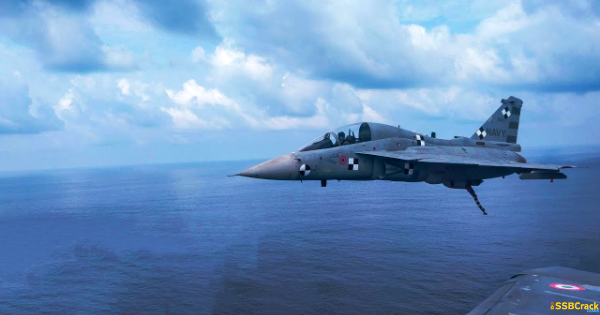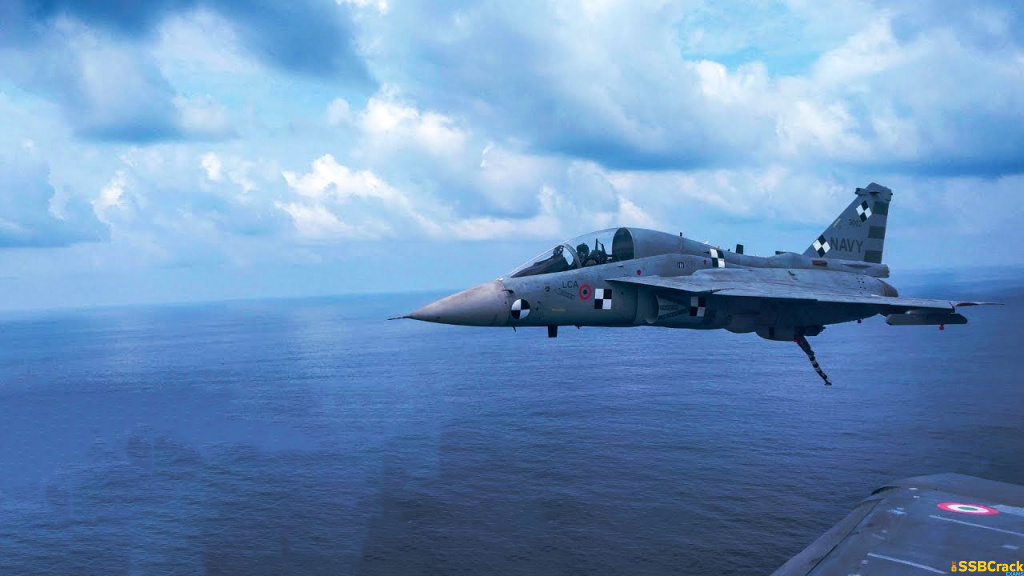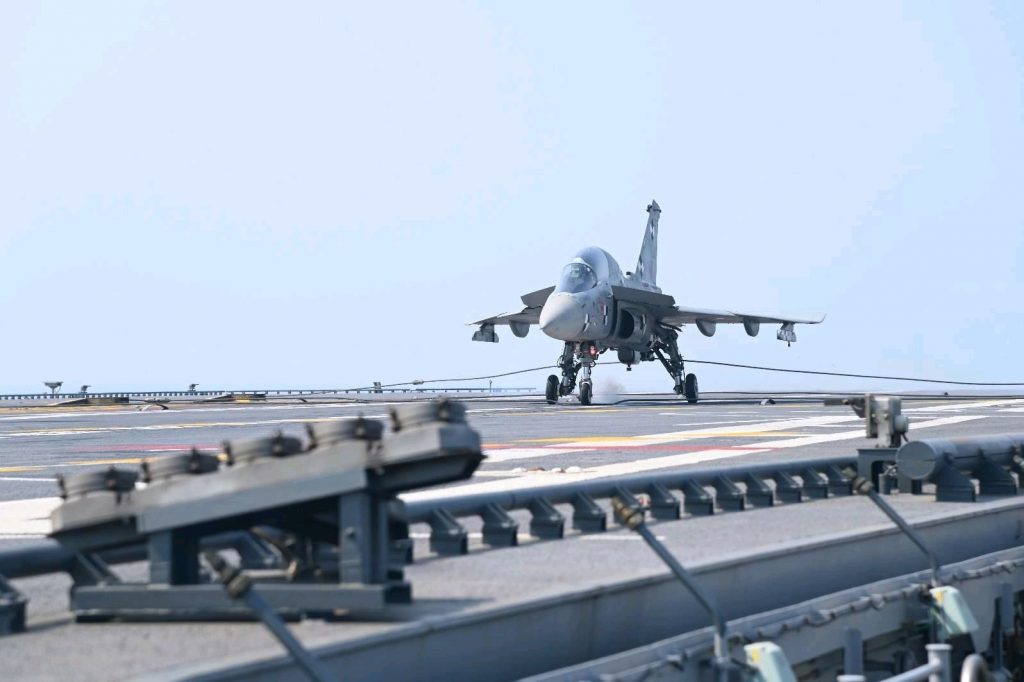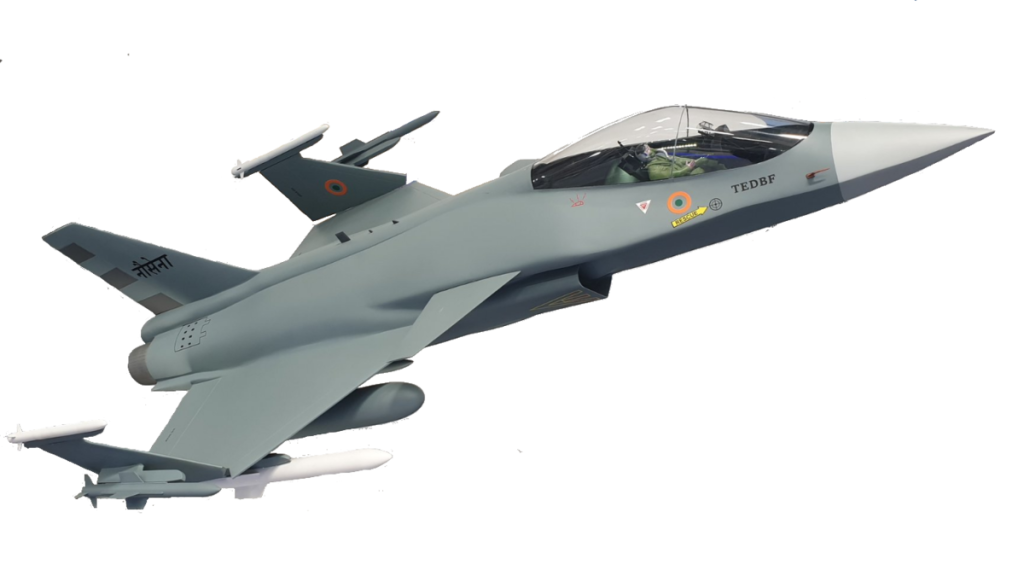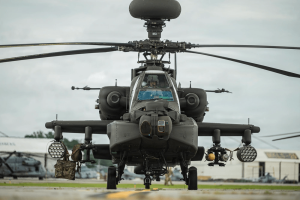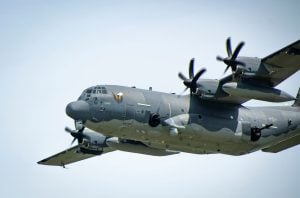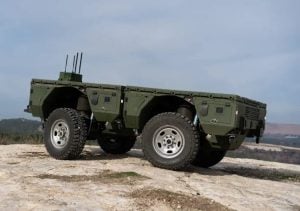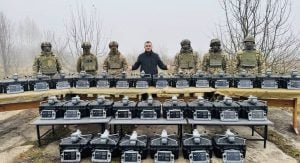The Indian-built fighter jet, Light Combat Aircraft (LCA) Tejas – naval variant, made a first-of-its-kind landing on an Indian-manufactured aircraft carrier, the brand-new INS Vikrant, which began sea trials in August 2021 and was commissioned in September 2022.
LCA Tejas Navy is not designed to operate from INS Vikrant
Previously, naval officials indicated that the aircraft carrier’s flight testing will take place this year. As part of the aircraft development, two prototypes of the Naval LCA-Mk1 are operating. In the most recent displays, the LCA Tejas was joined by a MiG-29K. According to the Indian Navy, It demonstrates India’s capability to design, develop, construct, and operate an indigenous aircraft carrier equipped with an indigenous fighter aircraft. The Naval LCA-Mk1 had previously operated from a carrier deck aboard the INS Vikramaditya, a warship transferred by Russia that is still in service with the Indian Navy.
On February 6, the NP2 jet, the second operational prototype of the aircraft, took off from the carrier’s “ski jump” ramp, marking the first time a fixed-wing aircraft of any kind had completed a complete cycle within the flattop. The NP-2, according to rumors, will begin a series of deck trials onboard the Vikrant to demonstrate its capacity. Previously, all of these trials were expected to be completed by mid-2023, allowing the carrier to commence full operational service. The indigenous aircraft carrier and the indigenously manufactured light combat aircraft were applauded and praised as soon as the news of the LCA Navy’s launch and landing came out.
Also read: Maiden Landing Of LCA Navy And MiG-29 Onboard INS Vikrant
Despite the Indian Navy’s celebration of the landing as a watershed moment, the LCA Tejas Navy is not designed to operate from INS Vikrant. The incredibly ambitious proposal for a Twin Engine Deck Based Fighter, or TEDBF, has already surpassed expectations for the release of a production version of the LCA Navy aircraft. It is worth noting, however, that the Indian Navy abandoned the idea of a carrier-based derivative of the lightweight fighter long before the LCA Navy made its debut at sea. It is now designated as a technological demonstration platform that will enhance Vikrant’s trials. In addition, the Indian Navy is finalizing plans for a foreign fighter plane to operate from INS Vikrant.
Why did the Navy Reject LCA Tejas?
On December 2, 2016, Admiral Sunil Lanba, then the Chief of Naval Staff (CNS), announced the Navy’s decision to reject the “overweight” LCA Tejas. The LCA Navy was discovered to have faults such as a weak under the fuselage and landing gear, a low thrust-to-weight ratio for taking off with a full fuel and weapons payload, and being a single-engine aircraft when the military prefers a robust twin-engine jet. The Tejas and MiG-29K was supposed to operate from the INS Vikrant.
Admiral Sunil Lanba, Chief of the Navy Staff (CNS), stated in a formal declaration, “The LCA Navy in its current form does not meet the naval qualitative requirements (QRs) to be a carrier-based aircraft.” It is excessively heavy for the engine it is equipped with. It does not meet the weight and power ratio criteria for full weapon load takeoff.” Prior to announcing its dissatisfaction with the LCA Tejas fighter, the Indian Navy planned to receive approximately 50 of the aircraft. Throughout the trials, the aircraft, nevertheless, reached significant milestones.
The most noteworthy was when the Tejas took off from the INS Vikramaditya on January 15, 2017, marking a number of significant occasions for the aircraft. It later landed on the Vikramaditya in January 2020, with the arrested hook precisely connecting with the arrester cables. The Indian Air Force (IAF) originally planned to use this single-engine delta-wing aircraft. Later, as the Sea Harrier fleet approached retirement, the Indian Navy exhibited an interest in the program and tasked the Aeronautical Development Agency (ADA) with designing and building a naval derivative of the LCA that could operate from an aircraft carrier.
Aerodynamic improvements to improve low speed, the installation of an arrester hook for deck landings, a significantly stronger undercarriage to handle the impact of deck landings, and a redesign of the cockpit for naval operations were among the naval variant’s unique design features for use from an aircraft carrier. All of these factors combined to make the development of the naval variant a demanding task, one that was more difficult to meet than the development of the version for the IAF. The NP-1, the first prototype of the LCA Tejas naval variant, flew in July 2010, while the NP2, the second prototype, flew in 2015.
TEDBF Program
The Navy has now made an investment in the TEDBF program. Despite a model shown at the Aero India event in 2021, it is still unclear how the TEDBF would look and whether it will use any of the LCA’s design elements. The TEDBF is expected to have a canard-delta chassis and twin engines, in contrast to the LCA Tejas’ single engine.
Also read: Twin Engine Deck-Based Fighters (TEDBF)
The TEDBF is still years away, with no production iteration of the multifunctional fighter expected until the 2030s. As a result, the Mikoyan MiG-29K/KUB Fulcrum fighter jets already stationed onboard the Vikramaditya would most likely be employed for Vikrant’s initial missions. Furthermore, the Indian Navy’s Multirole Carrier Borne Fighter (MRCBF), which is currently in development, would be replaced by either the Boeing F/A-18E/F Super Hornet Block III or the Dassault Rafale M, both of which have already been tested in India. According to rumors, the Rafale may now be the front-runner for the MRCBF.
To crack the SSB Interview and join the Indian Army as an Officer, You can join our SSB interview live classes batch and we recommend you to Enroll SSB INTERVIEW ONLINE COURSE. Trusted by thousands of defence aspirants.
Also read:
